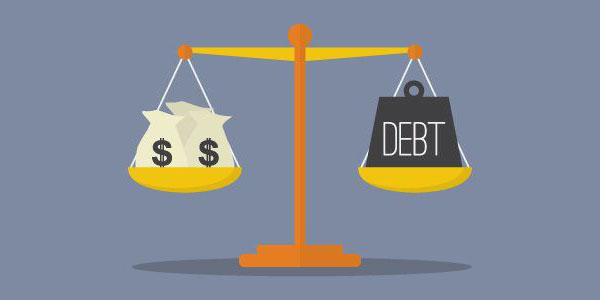The Impact of Generosity on This Holiday Season: A Blessing or a Burden?
Oct 13, 2024 By Triston Martin
The holiday season often brings with it a spirit of generosity, as individuals and communities come together to give and share joy. While giving can be a source of deep satisfaction and connection, it may also pose challenges, leading to the question of whether generosity is truly a blessing or a burden. This period is traditionally marked by an increase in charitable donations, gift-giving, and acts of kindness, fostering a sense of unity and goodwill. However, the demands that accompany these traditions can sometimes result in financial strain or emotional stress. The pressure to give generously can overshadow the true spirit of the season, leaving individuals feeling overwhelmed. This exploration delves into the dual nature of holiday generosity, examining how it impacts both the giver and the receiver.
Historical Context of Holiday Generosity

The tradition of holiday generosity can be traced back to various ancient cultures and practices that emphasize giving and community bonding during significant times of the year. In Roman society, the festival of Saturnalia celebrated the end of the planting season, where social order was temporarily reversed, and gift-giving among friends and family was common. In medieval times, the concept of charity during the Christmas season became widespread in Europe, inspired by the Christian teachings of compassion and support for the less fortunate.
This evolved further with the Victorian era's idealization of the family Christmas, popularized by stories such as Charles Dickens' "A Christmas Carol," emphasizing goodwill and the transformative power of generosity. Over the centuries, these historical influences have shaped modern holiday traditions, embedding the value of altruism and kindness deeply into our cultural consciousness.
How past events and economic conditions have shaped current trends?
Economic conditions and historical events have played pivotal roles in shaping contemporary trends regarding holiday generosity. For instance, the Great Depression of the 1930s left a lasting imprint on the practice of giving, with people focusing more on handmade gifts and communal gatherings due to financial constraints. This era highlighted the importance of sharing what little one has rather than accumulating material wealth.
In more recent decades, the economic boom of the late 20th century led to heightened consumerism, influencing holiday generosity to become more materialistic. The advent of Black Friday and Cyber Monday sales has further fueled this trend, shifting the focus towards gift-buying as a marker of generosity. Nevertheless, economic recessions, like the 2008 financial crisis, have reminded societies of the importance of non-material generosity and empathy, prompting a return to more meaningful, personal acts of kindness. As we navigate these economic fluctuations, the essence of generosity continues to be redefined, blending traditional values with modern expectations and societal changes.
Positive Impacts of Generosity
Generosity during the holiday season can have a profoundly positive impact on both individuals and communities.
Enhancing Personal Well-Being
One of the most significant benefits of holiday generosity is its effect on personal well-being. Engaging in acts of giving, whether through donations or simple acts of kindness, can enhance feelings of happiness and reduce stress. This phenomenon, often referred to as the "helper's high," is linked to the release of endorphins, promoting a sense of warmth and fulfillment. When individuals participate in generosity, they often experience a boost in self-esteem and better mental health outcomes, as the act of giving fosters a sense of purpose and community connection.
Strengthening Community Bonds
Beyond the individual, generosity can strengthen the fabric of communities. Acts of giving and kindness help build trust and solidarity among community members, encouraging a cooperative spirit. In times of need, such as during economic hardships or natural disasters, generosity becomes a critical means of support, providing resources and emotional support to those who are struggling. The reciprocal nature of giving and receiving can create a cycle of goodwill, where individuals feel more connected and willing to help one another out.
Spurring Economic Activity
Generosity during the holiday season also significantly contributes to economic vitality. Charitable donations and gift purchases inject millions of dollars into economies and support a wide range of industries, from retail to nonprofit sectors. This surge in economic activity not only provides a temporary boost but can have lasting positive effects, such as creating jobs and sustaining small businesses that rely on the holiday rush. Additionally, philanthropic contributions help fund community projects and services, multiplying the impact of generosity beyond individual gifts. These economic benefits underscore the multi-layered significance of generosity, highlighting its role in strengthening both social ties and financial health during the holiday season.
Potential Downsides of Excessive Generosity
While generosity is often lauded for its positive impacts, excessive giving during the holiday season can sometimes lead to unintended negative consequences. Understanding these potential downsides is crucial for maintaining a balanced approach to giving.
Financial Strain
One of the most immediate risks of excessive generosity is financial strain. The pressure to give lavishly can lead individuals to spend beyond their means, resulting in debt and financial insecurity. This is especially concerning during the holiday season, when individuals may feel compelled to participate in social norms of gift-giving and charitable donations without fully considering their personal budget limitations. This strain can ultimately diminish the joy and satisfaction typically associated with giving, transforming a selfless act into a source of stress and anxiety.
Emotional Burnout
Beyond financial implications, excessive generosity can also contribute to emotional burnout. The continuous demands of planning, purchasing, and distributing gifts, alongside participating in numerous charitable activities, can lead to feelings of exhaustion and overwhelm. Individuals who overextend themselves in their efforts to spread holiday cheer might find themselves emotionally depleted, unable to enjoy the festivities or engage in meaningful interactions with loved ones. Striking a balance between generosity and self-care is essential to prevent burnout and maintain personal well-being.
Diminishing Returns
There is a possibility that excessive generosity could lead to diminishing returns in terms of personal satisfaction and the value others place on received gifts or aid. When generosity becomes excessive, it may overshadow the thoughtfulness and intention behind each act, making it difficult for recipients to fully appreciate individual gestures. This scenario can sometimes result in a cycle where giving feels obligatory rather than genuine, potentially undermining the authentic spirit of generosity. It is important to focus on the quality rather than the quantity of giving to preserve the meaningfulness of each act of kindness.
Conclusion
The holiday season, with its focus on generosity, presents an opportunity to make a profound impact on both personal relationships and the wider community. While the act of giving can enhance happiness and build strong community bonds, it's important to approach generosity with mindfulness to avoid potential pitfalls like financial strain and emotional burnout. By finding a balance between material and non-material acts of generosity, individuals can ensure their giving is both sustainable and meaningful. Ultimately, embracing a thoughtful and intentional approach to generosity allows the holiday spirit to flourish, creating lasting joy and positive change for all involved.

How Mutual Fund Expense Ratios Work: Explain in Detail

Taking A Loan Against Your Life Insurance Policy

Investment At Every Age

Debt-To-Income Ratio Need for a Mortgage

Guide to Setting Up Your First Health Savings Account

Uncovering the Best Alternatives to Edgewonk: Elevate Your Trading Game

What Is an American Express Card?

Form 2439 Explained: Navigating Undistributed Long-Term Capital Gains

Leading Commercial Real Estate Investing Firms for 2024


